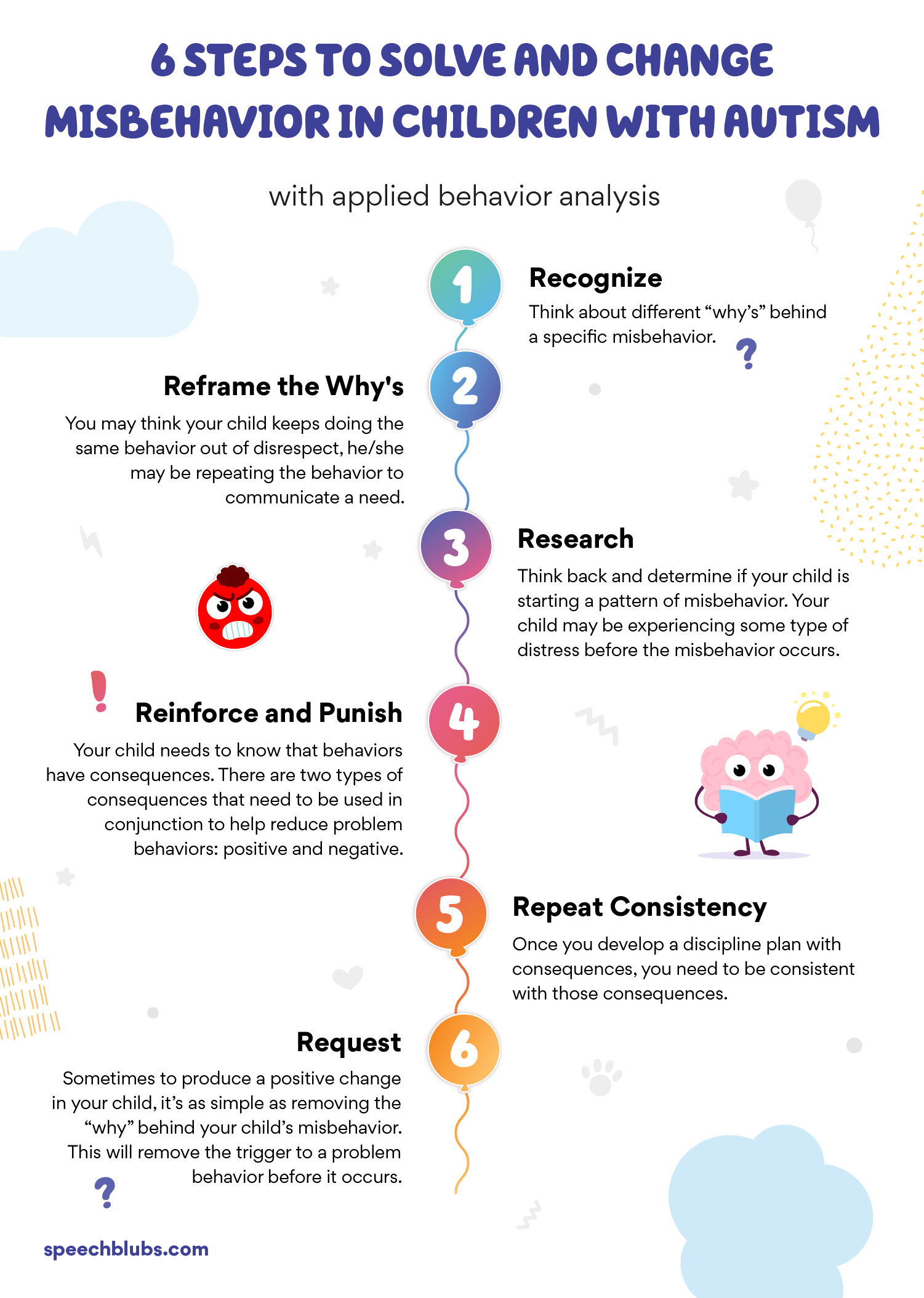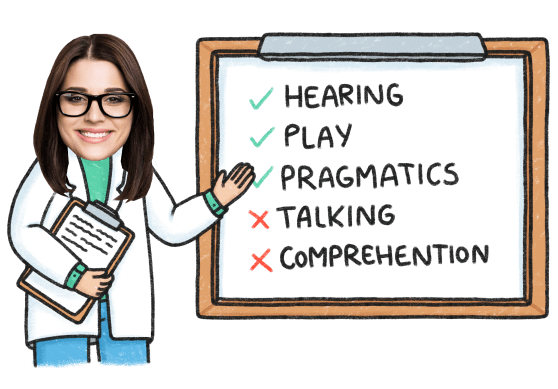6 Steps To Solve And Change Misbehavior In Children With Autism
Discipling a child with autism takes more patience and a completely different approach. Many children with autism are unable to regulate their emotions and struggle with communicating needs and frustrations. Because of this, parents need to examine each behavior problem of a child with autism to find the root of the issue.
For disciplining any child there are positive and negative discipline strategies. Negative discipline is a reaction to misbehavior that seeks to punish the child immediately, like hand slapping or spanking. While negative discipline like spanking produces immediate results (the child stops the behavior), it does not produce long-term results for children with autism. Instead, it’s more of a quick-fix solution to a bigger problem that needs more attention.
Positive behavior focuses on talking through behavior and listening to your child. Examples of positive discipline strategies include:
- Praise and rewards for good behavior
- Clear rules and boundaries
- Consequences for bad behavior
A child with autism may not have the necessary skills to understand and handle a situation, therefore he/she may behave incorrectly. Instead of enforcing negative punishments, it’s important to figure out the root of your child’s problem to better understand each individual misbehavior and challenge. Below is a six-step approach to correcting a problem through applied behavior analysis.
Boost Your Child’s Speech Development!
Improve language & communication skills with fun learning!

Instead of enforcing negative punishments, it’s important to figure out the root of your child’s problem.
6 Steps For Correcting Misbehavior
Step 1: Recognize
One area that children with autism struggle with is communication. If your child is nonverbal, it can be hard to understand what your child is trying to communicate. Many times, inappropriate behavior maybe your child trying to communicate something like a feeling of pain.
Children with autism respond differently to authority. Most likely, traditional methods of discipline will not work with a child on the autism spectrum. In fact, traditional methods may backfire on you.

For instance, if you yell or your face becomes red while explaining and disciplining misbehavior your child may find it entertaining or interesting. Then your child may repeat the same misbehavior to see your reaction.
Step 2: Reframe
Reframe your way of thinking about the “why” behind the behavior problems of your child with autism. Although you may think your child keeps doing the same behavior out of disrespect, he/she may be repeating the behavior to communicate a need.
To help you think about different “why’s” behind specific misbehavior, here are some examples of questions you may want to ask yourself:
- “Is he/she feeling overwhelmed with sensory input?”
- “Could he/she be hungry or thirsty?”
- “Could he/she be overly tired?”
- “Is he/she trying to get my attention?”
Step 3: Research
If your child tends to repeat the same misbehavior, think back and determine if your child is starting a pattern of misbehavior. That pattern could be due to an underlying cause. Your child may be experiencing some type of distress before the misbehavior occurs.
Ask yourself this question: “What happened immediately before your child started misbehaving?”
Let’s look at a scenario- A child begins screaming and covering his face in his hands after his grandmother comes over. Immediately before this misbehavior, his grandmother hugged him with strong-smelling perfume.
The misbehavior could be the result of sensory overload due to overly strong perfume.
Step 4: Reinforce and Punish
Although your child may be on the autism spectrum, he/she still needs to know that behaviors have consequences. Consequences serve the purpose of changing behavior. But there are two types of consequences that need to be used in conjunction to help reduce problem behaviors.
Reinforcers- Consequences that increase the likelihood of a positive behavior repeating. For instance, if your child behaves appropriately without a meltdown in a restaurant, then he/she can play with their favorite toy on the way home. By your child earning his/her favorite toy through good behavior, the toy reinforces positive behavior.

Punishments- Consequences that decrease the likelihood of misbehavior. For example, if your child stands on a chair, then remove the chair. The removal of the chair lets the child know he/she won’t be able to use it for sitting or standing.
Step 5: Repeat Consistency
Once you develop a discipline plan with consequences, you need to be consistent with those consequences. If you’re always changing the consequences and not showing consistency with them, the behavior problems of your child with autism will continue because your child may be confused.
Children with autism often need to have the same routine and consistency, this goes for discipline as well. Consistency with discipline is key for long-term results in changing problem behaviors.
Step 6: Request
Sometimes to produce a positive change in your child, it’s as simple as removing the “why” behind your child’s misbehavior. If your child feels overwhelmed by his/her grandmother’s perfume, request or ask the grandmother to avoid wearing perfume for her next visit. This will remove the trigger to a problem behavior before it occurs.

Conclusion
The 6-step applied behavior analysis approach can not only change a problem behavior long-term but also examine the deeper meaning behind a child’s misbehavior. As a parent of a child with autism, discipline is a major struggle. I try to always examine a deeper meaning behind my child’s meltdowns and misbehaviors. But it’s not always easy because he struggled with communicating needs.
What I’ve learned most about disciplining a child with autism is patience and reducing triggers is key!


